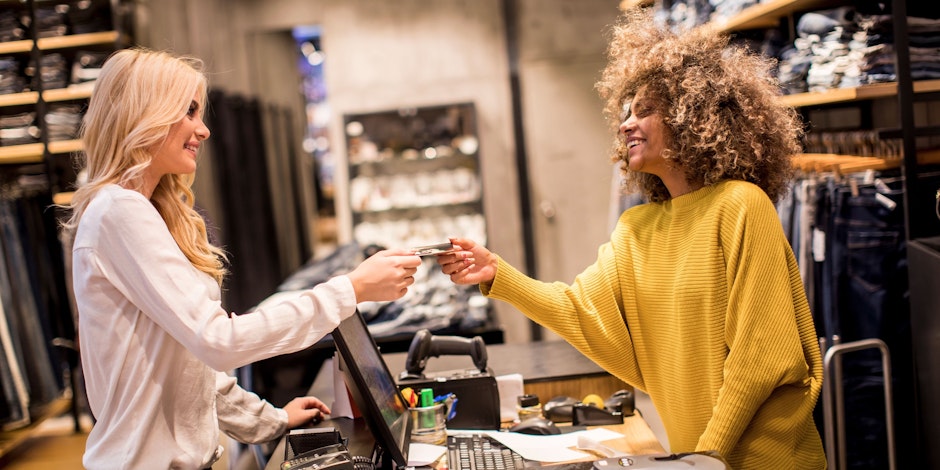Consumers don't think retailers are nailing personalization - here's how to do better
Personalization has been a promise cited by retailers for years

To many retailers, the term ‘personalization’ still remains a buzzword — cited across the industry, but confusing to define and difficult to actually achieve. And although some retail marketers do strive to put personalization into action, they’re often unable to move beyond “first name, last name.”
But personalization is supposed to be more than that.
Personalization is developing a meaningful customer experience from start to finish, using commerce data to understand your customer, then guiding them through a highly relevant journey — one uniquely tailored to who they are and what they’re seeking. When executed carefully, personalization can anticipate a consumer’s needs in advance, unlock new customer growth, and build lasting brand loyalty. Consumers themselves have validated this, with 80% saying they’re more likely to buy from a brand that offers personalized experiences.
True personalization has the power to help companies achieve accelerated growth and drive digital commerce forward, but still, a gap persists between what consumers are expecting and what retailers are delivering. Ultimately, this comes down to the fact that very few businesses have been able to understand their customers in real-time, hindering true personalization efforts. As retailer marketers aim to bridge this gap, data is where they must begin.
Real-time data means real-time success
We all know the moment when we walk into a store and the sales associate rushes to our side. Whether or not we’re browsing with the intent to purchase, we know that someone is there to show us what we need or to guide us toward other items we might like. That’s how it should feel every time you engage with a brand digitally — as if that channel has been curated to guide you, individually, toward the things you need.
Your digital experience should incorporate personalization at every step, constantly evolving with the customer’s preferences as they move through your site or app or marketing content. Yet this is only achieved when customer behavior is understood and anticipated in real-time, and often, retailers lack the advanced customer journey analytics that can allow them to do this. Without that real-time understanding, and the ability to put insights into action across their digital channels with the support of AI and automation, their personalization efforts fall flat. And at a time when customers have so much choice available to them — when they can simply find another brand when one doesn’t deliver the experience they want — those efforts falling flat should be a wake up call. Retailers need to invest in technology that will allow them to unify data sources, access insights in real-time, then put it to action across channels. An improved data strategy, driven by the right technology, is key to bridging the personalization gap for retailers, as other industries have already begun to recognize.
Humanizing the conversation
Despite the data-driven nature of successful personalization efforts, it's important that retailers remember to use it to create customer interactions that, above all, feel human. Email is a channel where many brands succeed in this. From community-oriented newsletters to the use of humor and pop culture references, they’ve used email to offer relevant brand content while still remaining approachable. The addition of data-driven personalization simply offers another opportunity for adding value within those emails, such as displaying product recommendations or a promotion on an item abandoned in a customer’s cart.
On the other hand, a channel where many still struggle to accomplish approachable personalization is SMS/MMS. But this is also a channel that holds incredible potential for customer engagement. A recent study found that 72% of consumers claimed they only engage with personalized text messages, signifying that personalization does indeed spark more engagement. To see this in action, consider this recent campaign from Dior, which launched a WhatsApp campaign featuring Blackpink member Jisoo. The messages allowed users to join an exclusive group in which they could talk with a chatbot representing the K-pop singer, offering an interactive (and personalized) way for Dior to engage with potential customers. The WhatsApp group reached capacity on the first day.
While this campaign shows MMS personalization at its finest, there are many smaller and more accessible opportunities for brands to insert personalization into this channel. Eliminating bot-like language is a good place to start. Retailers can also address a customer by name instead of “valued customer,” use conversational language, and respond in real-time to initiate a conversation. These changes not only offer a more personalized, humanized interaction, they also allow for customers to see beyond just the purchase and value the brand for creating a more unique experience.
A two-way street
It’s important to highlight that the benefits of personalization aren’t just for consumers. With more personalized consumer experiences, retailers and brands have access to better and more useful data, analysis, and insights. With better data, marketers are able to learn what does and doesn’t work, then improve upon their efforts.This drives customer acquisition in the short-term and builds sustainable loyalty in the long-term. When done right, personalization can simultaneously drive measurable growth for a brand, while also offering more enjoyable experiences for shoppers.
Ultimately, the truly successful digital experiences of the future will be built with personalization at the forefront, and retail is no exception. Retailers need to recognize and begin to bridge the gap that exists between the personalization they offer and the personalization consumers want, because in an era of evolving customer expectations and increased digital competition, customers won’t wait around for brands to get it right. The ones that focus on personalization today are the ones that customers will return to in the future.

